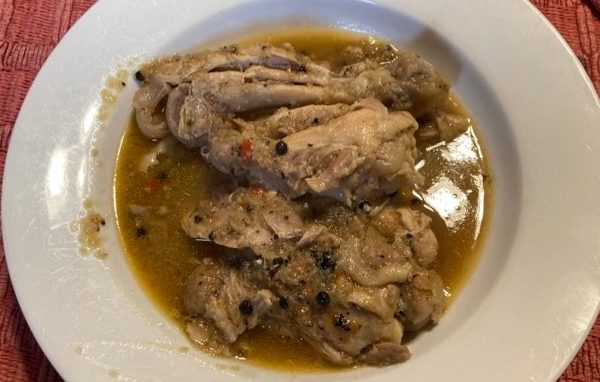Other Cuisines
Marga's Food

marga@lacabe.com
| The Dayak is the name given to the native population of central Borneo. It's a word that means something akin to "savages" and while it was originally used despectively, the Dayak have now adopted it themselves.
The Dayak fall into three major ethnic-linguistic groups, under which they are divided into a myriad of ethnicities. They traditionally lived along river beds and practiced subsistence agriculture, with rice being their mainstay. They raised pigs but otherwise relied on meats and jungle produce to supplement their meals.
Culturally, the Dayak are mainly known for being headhunters - a practice that diminished after colonization and particularly Christianization. They traditionally live in wooden longhouses which sit upon tall posts. These can be up to five hundred yards long, and include an entrance, accessed via a ladder, for each family group. They basically seem to be apartment buildings, sitting on stills, and with no interior walls. Cooking is done in common areas.
Dayak cuisine usually consist on simple and quick dishes that utilize pork and jungle vegetables as the main ingredients. Fermented produce is sometimes use to add a sour flavor to a dish. Dayak restaurants have opened in recent years in the larger coastal cities of Borneo, in both Malaysia and Indonesia.
In the future, I will likely explore dishes (if not full cuisines) from different parts of Borneo and other ethnic groups, most of which fall within the greater Dayak category.
For my quick sojourn into the general Dayak cuisine, I made:
Black Pepper Stew

The Malaysian province of Sarawak, in eastern Borneo, has long been famous for the quality of its black pepper, and the Dayak people have harvested it for generations. This dish emphasis the bright flavor of black peppercorns. It was traditionally made with jungle meat (bats, wild boars, squirrels, pangolin), fresh water snails or black dog meat, but this recipe uses chicken parts instead. I'm sure pork would work just as well.
Most of the ingredients are pretty easy to find in America (surprising for any Malaysian/Indonesian dish), though in Borneo you would also add sour-tasting fruits such as thinly sliced yellow eggplant, ambarella or noni. It seemed unlikely I would find these here, so I decided to skip them and instead just use tamarind to make it sour.
The dish was quite good and we enjoyed it. However, merely cracking the peppercorns with a mortal and pestle left many peppercorns too coarse, and we didn't really like eating them as such. I'd recommend you grind the pepper in a grinder instead.
PRINT PDF
Black Pepper Stew
Ingredients
- 10 shallots, peeled
- 10 cloves of garlic, peeled
- 3" ginger root, peeled
- 2 bird eye's chilies, seeded and chopped
- 2 tsp shrimp paste
- 2 Tbsp cooking oil
- 3 lbs chicken parts
- 3 Tbsp black peppercorns, coarsely pounded or freshly ground
- 2 pieces dried tamarind or 2 Tbsp tamarind paste
- 1 Tbsp whiskey
- sour vegetables (optional)
- salt to taste
Directions
Using an electric food processor or blender, puree (or finely chop) the shallots, garlic and ginger root. Alternatively, pound them with a mortar and pestle. In a small bowl, mix together the chopped chilies and shrimp paste.
Heat the oil in a large pot or saute pan over medium-high heat. Add the shallot mixture and stir fry until fragrant. Add the red pepper mixture and stir fry for a few minutes. Add the chicken parts and stir so that the chicken is covered with the shallot mixture. Cover, reduce heat to low, and cook for 15 minutes. Add enough water to cover the chicken and mix well. Cover, turn heat to medium-low and cook for about an hour. Uncover and add the peppercorns, tamarind, whiskey, sour vegetables, if using, and salt to taste. Continue cooking for another 10 minutes.
|
Adapted from Nimi's recipe at Sarawak Ethnic Cuisine
Related cuisines I've explored so far: Ambonese, Balinese, Indonesian, Jakartan, Javanese, Bruneian
Do you have a comment on this recipe? Please make it here
|